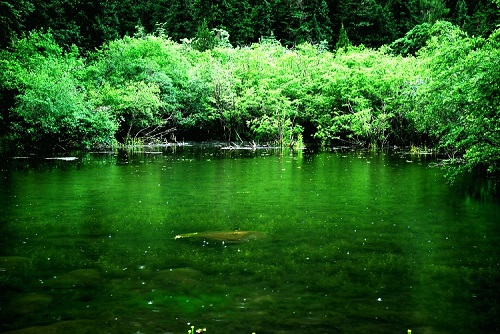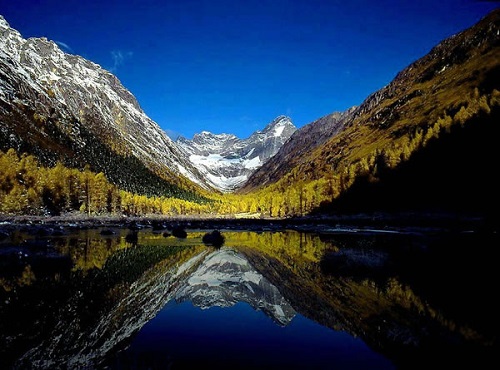Changping Valley
Changping Valley stretches for 29km, covering an area of about 100m2, with 21 sightseeing points scattered along this green gallery. There are plentiful primitive plant species in the valley, and the vegetation is well preserved. In addition to the beautiful scenery, this place is also known for miraculous legends about Mt. Siguniang and the ethnic customs of rGyalrong Tibetan formed over the past millennia. All these make Changping Valley the best place for primitive ecotourism and ethnic custom tourism in the Mt. Siguniang scenic area. In the primitive forest stand tall cypresses, flourishing pines, dense cedars and willows, shading the sky. Looking up, the sun shines through the crowns, pouring rays of sunlight down to the ground. Looking down, the mossy soil leaves tourists with a peculiar sense of peace and primitiveness, just like a scenic picture that is depicted in ancient poems. In the depth of the woods unfolds an expansive meadow that is surrounded by mountains, as well as a brook that winds through the meadow, leading visitors to a completely serene world. Changping Valley is also a paradise for outdoor adventurers, as it is an important campsite for climbing the Third Peak and Fourth Peak, as well as an ideal place for rock and ice climbing. Starting from here, tourists can also trek to Bipeng Valley in Lixian County.

Rgyalrong Tibetan Opera Culture:
In some regions of Jinchuan, Xiaojin, Barkam, Lixian, Heishui and Wenchuan of Aba Tibetan Qiang Autonomous Prefecture, as well as Garzê Tibetan Autonomous Prefecture, Ya'an and Liangshan Prefecture live the Tibetans who speak a dialect called Rgyalrong and mainly make a living on agricultural production, and therefore are called "Rongba" (person in rural areas). "Rgyalrong" is named for the holy mountain Jiamu Mo'erduo Mountain, meaning the surrounding areas of this mountain. The Tibetan culture is mostly about heroes' taming of demons. The calling for good deeds and accumulating virtues in Buddhist stories and stories about defeating the evil might reflect the local production, customs and life styles (Rgyalrong Tibetan dance is on the brink of extinction).

